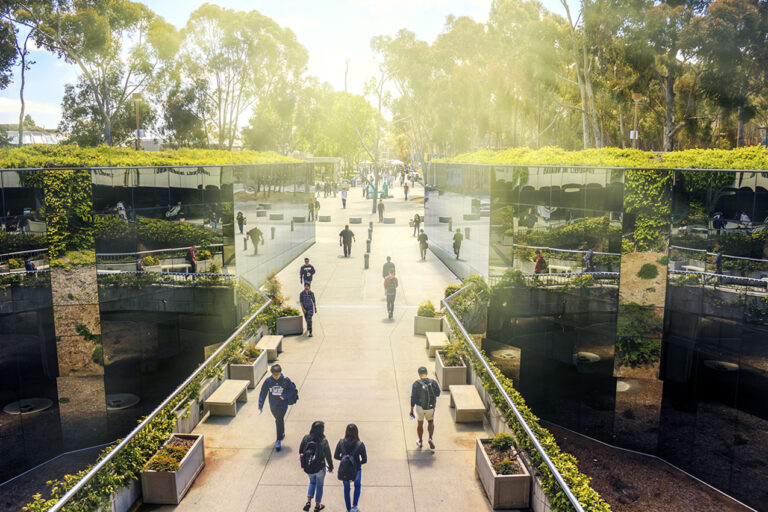California faces an increasing demand for affordable higher education and a need for adequate facilities suited to a rapidly evolving economy. PPIC estimates that by 2030 the supply of college graduates will fall 1.1 million short of workforce demand. All three public systems-UC, CSU, and CCC-are working to bridge that gap. Alongside the three systems’ efforts, the state must consider the following cross-cutting capital finance challenges:
- A growing need for more capacity. California’s K-12 and higher education systems are making progress toward closing the workforce skills gap. This will eventually produce an unprecedented influx of college-ready Californians, but the state of current facilities remains a central challenge.
- Historical underinvestment. Data suggest that economic pressures and policy decisions have led California to underinvest in higher education infrastructure over the past decade, ballooning deferred maintenance backlogs across all three systems. Estimates reported by UC, CSU, and community colleges reflect that facility modernization and maintenance could cost more than $50 billion through 2022-23.
- Decentralized decision making. Recent policy changes created a more streamlined process, but with distributed accountability and reduced transparency. Consequently, the state is now less able to align capital spending with its broader higher education priorities.
These conditions create unique challenges for each system, especially CSU. If California is to fulfill its need for an expanded college-educated workforce by 2030, several guidelines apply across the board with respect to capital financing. State policymakers, systems, and other stakeholders must seek to increase transparency and accountability, explore non-traditional alternatives to leverage resources, and consider establishing system capital reserves. According to a recent PPIC survey, two-thirds of adult Californians favor a potential state bond measure for higher education construction projects (Baldassare, Bonner, Dykman, and Lopes 2018). As such, any new state bonds should be used to prioritize projects that both align with state priorities and would be difficult to fund at the system or campus level.
Topics
Access Finance Higher Education

